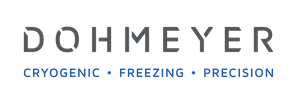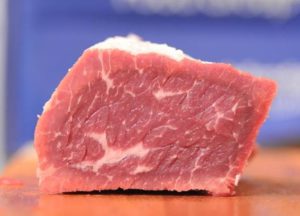Crust freezing
Hardening the surface of a product for easy further processing.
For some subsequent processes like slicing or decorating, it is necessary to harden the surface by crust-freezing. By using liquid nitrogen or carbon dioxide snow (CO2 dry ice flakes) for fast freezing and solidifying of the surface, you can stabilise the outside dimensions and shape of any foodstuff.
Cryogenic batch freezers use liquefied carbon dioxide (LCO2) or liquefied nitrogen (LIN) for discontinuous cooling and freezing. Controlled injection of the cryogenic gas lowers the temperature in the cabinet as the gas immediately evaporates. The latent heat of evaporation is the main source of cooling energy.











